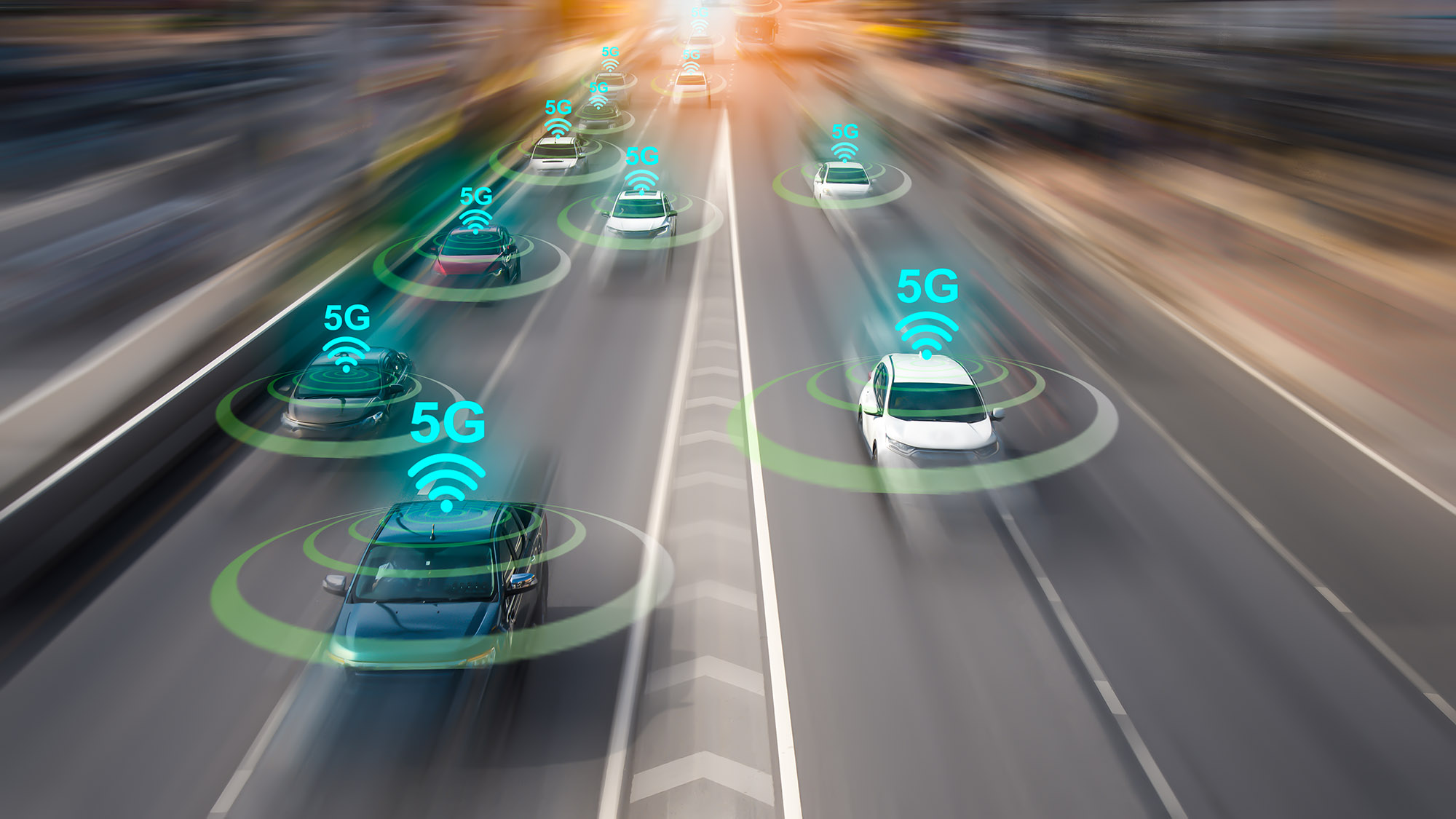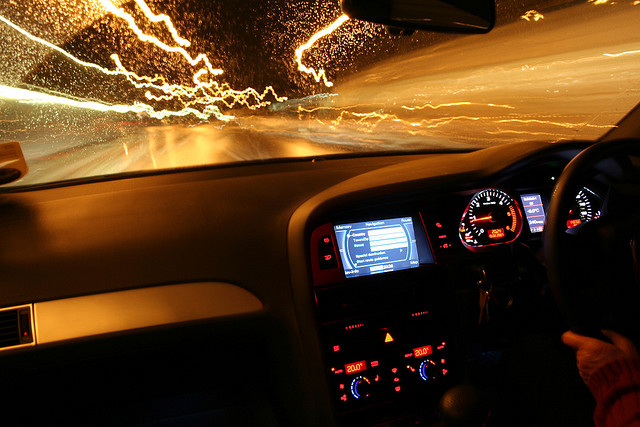Will 5G transform the connected car market?
5G presents new revenue opportunities for much of the automotive ecosystem, but there’s mixed opinion on when it will start influencing the connected car market

The technology powering today’s cars is evolving at breakneck speed. According to recent figures from the Society of Motor Manufacturers and Traders (SMMT), around two-thirds of new cars manufactured today are connected – which means they’re sending data about the driver and the vehicle to the manufacturer. This number is expected to rise year-on-year until 2026 when 100% of new cars will be connected.
This is just the start of things to come. The next step for connected cars is vehicle-to-everything (V2X) communication, which will see cars exchange information left, right and centre – connecting with infrastructure, other vehicles, networks, pedestrians, the smart grid and more.
Getting to this point, however, will be no easy feat. Today’s connected vehicles are already effectively data centres on wheels, each creating up to 40 terabytes of data per day. “That’s the equivalent of 250 million pages printed both sides or 280,000 hours of music,” says Axel Schmidt, industry sector lead for automotive at Accenture.
While the rise of V2X will see this data creation increase to seemingly unmanageable levels, there is one technology that promises to help – and that’s 5G.
A quantum leap in connectivity
“5G technology will allow the network to handle more traffic and more devices, facilitating better quality communication and improved customer experience,” says Kirolous Zikry, a telecoms specialist at PwC Strategy&. “It also comes with major improvements in latency and reliability. At under 20ms, the latency of 5G is similar to, or lower than, the human brain.”
5G is also expected to be significantly more energy efficient. According to PwC, the network is already twice as efficient as 4G in early test cities, and this will only continue to improve. In the long term, 5G could reduce the energy consumption of the future network by up to a factor of 20 compared to 4G.
What’s more, 5G is expected to be pivotal to the eventual roll-out of autonomous vehicles. “It enables the flow of data generated by connected and self-driving vehicles and allows it to be processed and used to improve safety, reduce congestion and even reduce vehicle emissions,” says Dr Richard Porter, technology and innovation director at Zenzic, a UK company created by government and industry to accelerate the connected and self-driving ecosystem.
Sign up today and you will receive a free copy of our Future Focus 2025 report - the leading guidance on AI, cybersecurity and other IT challenges as per 700+ senior executives
Driving new opportunities
Schmidt believes the potential is huge. “It could change literally everything,” he says. “Think about how powerful a combination between 5G and blockchain could be. Imagine you’re late for your flight and while you’re rushing to the airport, wouldn’t it be great to live in a world where we can leverage 5G and blockchain to be able to ‘buy’ a green light? Imagine you want to go on a ride and you’re keen on topping up your engine’s performance with additional horsepower to enhance your driving experience. This could be done with a simple software adjustment – and by using 5G that can be done quickly.”
The list of potential future scenarios is endless. “With V2X communication a driver could connect to their smart meter to switch on the heating as they head home,” says Akshara Chandhok, an auto specialist at PwC Strategy&. “Or they could share information with other nearby vehicles, or with vulnerable road users such as pedestrians or cyclists, about their speed and direction of travel to avoid collisions.”
Making progress
This potential is already proving attractive to automotive manufacturers, many of whom are working on integrating 5G into their cars. Ford, for example, is reportedly building its own LTE/5G network to test connected cars in a private environment. And when the first iterations of the BMW iNext make their debut in mid-2021, 5G technology will be present and correct.
“This will make the BMW Group the world’s first premium carmaker to offer the new mobile technology in one of its models,” says James Mallinson, BMW’s head of development for vehicle connectivity and mobile communications. “The introduction of 5G into other model ranges will commence soon after.”
Mercedes-Benz is following suit. “We are currently developing 5G technology for integration in our cars,” says Rainer Freitag, head of communication modules and over-the-air updates for research and development at Mercedes-Benz Cars. “5G will help make the connected car experience even better, with more applications, more reliable connections and will perfectly complement autonomous driving. We expect 5G to become available in our vehicles in 2022.”
Other industry players are using the potential of 5G to transform in-vehicle entertainment. Holoride, for example, wants to turn vehicles into moving theme parks for passengers, by combining navigational and car data with extended reality. “Using 5G might not only enable access to a greater variety of content while on the go, but also improve the overall holoride experience,” says Nils Wollny, the firm’s CEO and co-founder. “As 5G is implemented on a broad scale in connected cars and beyond, we can achieve this goal even faster and improve the backseat experience for passengers around the world.”
Approach with caution
While the promise for the future is huge, it’s important to remember that less than 10% of operators have deployed 5G today. It’s for this reason that German automaker Volkswagen is more cautious about its approach. “For now, I believe it is too early to set a date for when 5G will be available in our cars,” a Volkswagen spokesperson told IT Pro. “5G hardware and broad infrastructure is simply not available yet, so we would put the safety and comfort of our drivers at risk by trying to adopt it too quickly.”
Other stakeholders are also showing restraint. “We need to make sure we have the digital infrastructure in place to handle, and draw benefit from, the sheer amount of data generated by these vehicles,” says Zenzic’s Porter.
There are legal concerns too. “Regulatory frameworks are still in their early stages of development,” Porter adds. “They will need to mature significantly before we start to see public-facing services.”
However, Alex Epstein, director of transportation safety for the National Safety Council, believes 5G is one of multiple systems that will actually help alleviate concerns. “Connectivity within the transportation ecosystem is expected to translate into a variety of safety benefits, road-use efficiencies and traffic management solutions, among others. Fundamentally, we perceive the connected system to be a safer and more efficient system than one that maximises individual vehicle, personal or infrastructure choices. We view 5G, dedicated short range communication and other legacy solutions such as 4G, as well as other future solutions such as 6G (which might come in 2030), to be part of the solution. Vehicles tend to be in service longer each year and as such, ensuring a communication solution that works with legacy systems and evolving systems will be necessary.”
A collaborative future
Success will require a massive commitment on the part of infrastructure developers and owners, as well as OEMs and tech companies. But once this infrastructure is in place, the intelligent use of data will help foster new efficiencies across the entire transport network.
BMW’s Mallinson believes his organisation is helping to lay the groundwork for a collaborative effort. “That’s why we are the first carmaker to make our anonymised safety-related traffic data universally available for non-commercial use,” he says. “Ultimately, when it comes to road safety, there are no competitors, only partners. By sharing traffic data and implementing V2X connectivity, we can directly improve the automotive experience for road users everywhere.
-
 Smart ships are coming
Smart ships are comingIn-depth Autonomous vehicles don't start and end with cars. Our seas and waterways are set to be revolutionised, too
-
 Intel launches security initiative for smart cars
Intel launches security initiative for smart carsNews Security professionals invited to join new research initiative
-
 Nokia sells HERE mapping service for £1.9 bn to Audi, BMW and Daimler
Nokia sells HERE mapping service for £1.9 bn to Audi, BMW and DaimlerNews Nokia says its brand will be "renewed" by purchase

